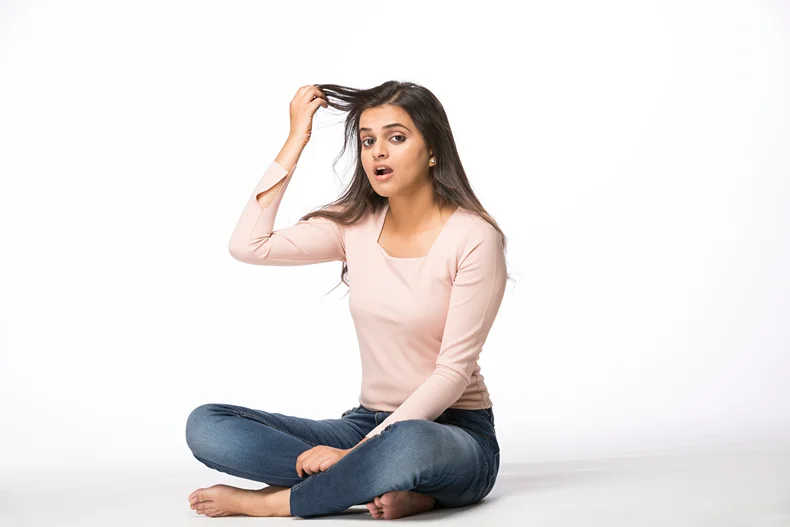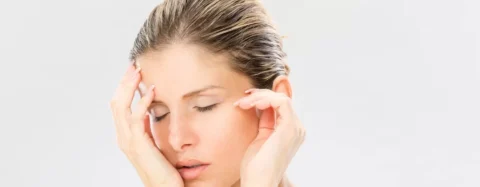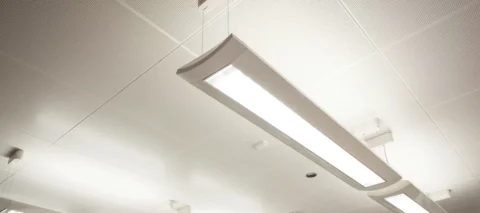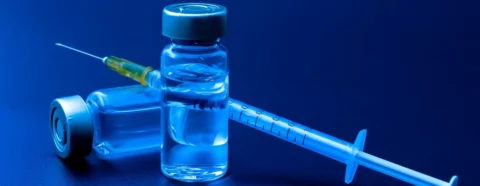Chronic migraines impact 39 million people in the United States, with 4 million of them experiencing daily discomfort. While being used for cosmetic treatments, Botox is proven to be useful for those suffering from complex neurological symptoms and severe pain due to persistent migraines. But while many Botox users reported reduced headaches, there are a few claims about Botox and its links to hair loss.
So can Botox treatments for migraines really lead to hair loss? Contrary to what’s been spreading around, Botox for chronic migraines is actually not associated with hair loss – in fact, it could even help with hair loss issues. While cosmetic purposes remain the primary goal of Botox injections, there has been extensive research into what else Botox may be able to aid with, one of which being hair loss.
Does Migraine Treatment with Botulinum Toxin Cause Hair Loss?
Although this is a widespread concern, there’s no proof that Botox for chronic migraines induces the loss of hair. Research suggests that Botox might actually be useful for preventing hair loss. Botox injections in patients to address hair loss have not been approved by the FDA. That isn’t to say that Botox for hair loss can’t be performed by a licensed and competent licensed healthcare provider if you request it.
How Does Botox Affect Your Hair?

According to a study published in 2020 in China, administering Botox or Botulinum toxin type A (BTA) injections into the scalp every three months for a year helped with hair growth. Botox injections are supposed to relax muscles in the scalp, allowing for better blood flow and nutrient delivery.
Botox treatments can stimulate hair growth and reduce thinning on the scalp. This will, of course, only take effect on living hair follicles. If you have bald patches on your scalp, Botox injections are unlikely to help, and a hair transplant may be the only alternative.
Are Botox Injections Approved for Hair Loss Treatment?
At the present, only two FDA-approved treatments are available for androgenetic alopecia; namely, minoxidil and finasteride. Botulinum toxin injections, on the other hand, has demonstrated some potential as an adjuvant treatment for patients after being tested in modest clinical trials.
Botox injections on the scalp are considered to relax muscles, improve blood flow, and boost nutrient delivery to the hair. It appears to work only if the hair follicle isn’t fully damaged and still shows signs of life.
Botox vs. Other Hair Loss Solutions: What’s the Difference?
There are numerous hair loss solutions on the market that claim to be the best. The truth is that there is no such thing as the best choice. However, some may address the problem at a greater scale and so tackle it more effectively. Botox is one of these treatments. So, how does botox match up against other treatments like minoxidil and finasteride?
Minoxidil
Minoxidil, often known as Rogaine, is a topical medication for androgenetic alopecia that is administered to the scalp directly. While the mechanisms of minoxidil for hair development are unknown, some theories of this exist. Minoxidil was first created as a treatment for hypertension or high blood pressure. It works by dilating the blood vessels, which lowers blood pressure and improves the circulation of blood.
Despite the follicular miniaturization that happens throughout the progression of hair thinning, minoxidil is thought to enhance blood flow. Botox, unlike minoxidil, which improves blood flow without addressing the underlying problem, tackles the issue of scalp tension. The initial result is the same: increased blood flow to the follicles.
Finasteride
There are two FDA-approved medicines for treating any form of hair loss. Minoxidil and finasteride are the first and second, respectively. Finasteride (Propecia) is an oral medication that works by blocking the enzyme 5-alpha-reductase. Although the medication has been shown to delay the rate of hair loss and even to stimulate hair growth in some individuals, it’s not without its side effects.
The biggest downside of finasteride is that it increases the susceptibility of your hair follicles to DHT. This means that if you stop taking it, you may have a lot of hair loss. Finasteride, like minoxidil, only addresses a portion of the issue. Botox, on the other hand, addresses the underlying problem in order to get long-term outcomes.
Botox has the added benefit of not requiring daily treatment. You’re done after just a single visit to the clinic. FDA-approved medications, like minoxidil and finasteride, can be additional treatments alongside injections of botulinum toxin to provide even better outcomes.
Other Potential Side Effects of Botox for Migraines
Botulinum toxin is most commonly used to address wrinkles or excessive sweating, but it’s also becoming a preferred treatment for chronic migraine pain. Botox procedures are well-tolerated by most individuals and are regarded as safe when administered by a skilled practitioner. Even so, there are certain potential adverse effects to be aware of if you begin using Botox to treat migraine headaches.
Mild Side Effects
Treatment with botulinum toxin rarely causes complications or negative effects. Neck discomfort and stiffness are the most common Botox treatment side effects. After the treatment, you could get a headache or eye dryness. Muscle weakness in the neck and upper shoulders may also occur temporarily. Patients may have difficulty keeping their heads upright during this time, so individuals suffering from a neurological condition are often advised against Botox treatments.
Bruising around the injection site, as well as flu-like symptoms, are also possible side effects. These common side effects normally go away after a few days. Botox toxin can spread outside the injection site in rare situations. You may experience the following if this occurs:
- Visual disturbances
- Muscle weakness
- Drooping eyelids
- Sharply raised eyebrows
- Difficulty swallowing
- Neck pain
- Eye dryness
- Slight or partial facial paralysis
Always have Botox prescribed and administered by a competent healthcare practitioner to avoid common side effects and complications, such as partial facial paralysis and eye dryness. Look for board-certified doctors or neurologists who have treated chronic migraines with Botox.
Long-term Side Effects
Long-term side effects, on the other hand, are also a possibility. These adverse effects are caused by the treatment with botulinum toxin and might last for several weeks. The muscles near the injection sites, such as the temples, may thin out over time. However, this rarely poses a problem. Some examples are:
- Muscle weakness
- “Drooping” or uneven eyebrows
Serious Side Effects
Botox for migraines has few serious side effects, and those that do occur are rarely serious enough to warrant people to stop using the medication. Botulinum toxin injections can, however, cause serious side effects in some people. If you observe any of the following symptoms following your treatment with botulinum toxin, you should seek medical attention immediately:
- Visual disturbances
- Swelling of the throat or tongue
- Speaking or swallowing difficulties
A botox injection in patients may rarely cause an allergic reaction, but it is possible. Contact a medical professional immediately if you develop an itchy rash, red welts, asthma, persistent eye dryness, or any other side effects that don’t go away on their own.
Is Botox The Right Treatment for Migraines?

Migraines or tension headaches are a neurological disorder distinguished by extreme head pain (usually on one side) and symptoms including nausea or vomiting, as well as sensitivity to light, sounds, and scents. Chronic migraine sufferers might try literally anything in order to find relief. The reality is that migraine headache attacks can be debilitating and painful and can have a major impact on your quality of life.
For those who suffer from migraines on a regular basis, Botox is believed to reduce the number of migraine days by 50% on average. Botulinum toxin works by paralyzing nerve terminals. Essentially, nerve terminals communicate pain while also producing pain substances. Administering Botox injection in patients with chronic migraines effectively inhibits this process. The treatment with botulinum toxin interrupts the patterning of pain and relaxes the muscles.
The Botox Procedure for Migraine Prevention
Botox are administered in 31 to 39 tiny injections, according to the guidelines. These are injected beneath the skin or into the head, forehead, ears, and neck muscles. Botulinum toxin injection in patients will be delivered by an experienced medical practitioner.
Every 12 weeks or one treatment cycle, top-up injections are administered to enhance and prolong the efficacy of the treatment. Botox is typically given until your migraine has gone from chronic to episodic for three months in a row, or when the quality of life shows a significant improvement. Botox may be discontinued if it does not adequately relieve your migraine.
It could take 10 to 14 days or longer for migraine patients to feel the relief after receiving Botox injections. In rare circumstances, the first set of injections may not provide any improvement from your symptoms. Additional treatments might be more beneficial for some individuals.
Factors to Consider Before Getting Botox for Migraine Prevention
If traditional preventative treatments haven’t worked, it’s time to consult with an experienced provider regarding Botox. It’s a simple and low-risk procedure that could lead to more symptom-free days. Whether or not Botox is the right treatment for you depends on several factors. Here are three to consider before opting for Botox to treat your migraines.
1) Frequency of Migraines
Chronic migraine is described as occurring 15 headache days (or more) each month on average. In general, the more headaches you get, the better Botox will work for you. However, it is not advisable for individuals who have fewer than 15 headache days each month. It’s also worth noting that Botox isn’t recommended as a first-line treatment for chronic migraines, so talk to your primary care doctor about other preventive treatments before considering Botox.
2) Insurance
Treatments of botox injection in patients with migraines should be covered by insurance, but there are a few factors to consider. Following the FDA’s approval of Botox for the treatment of chronic migraines, most insurance companies, including Medicare and Medicaid, have begun to cover it. However, health insurance providers may require patients to try at least two or three alternative treatments.
Before insurance companies cover the cost of injections, people suffering from migraines are advised to take preventative drugs. After an individual has tried other migraine treatments that failed to work or caused too many side effects, an insurance company should cover the expenses of the Botox procedure. Botox can be expensive if you don’t have insurance, especially when repeated treatments are required.
3) Multiple Treatment Sessions
Botox may not be successful in treating migraines beyond the initial treatment cycle. Even if it is, the effects are temporary. It takes around two weeks to start working, however, some individuals may experience relief from chronic migraines sooner.
If treatment with botulinum toxin is effective for migraine patients, one session of treatment usually lasts three months. Though everyone’s body metabolizes botulinum toxin differently, it’s been shown that having the procedure done every three months or so is beneficial.
Botox treatments cost vary based on where you live and how much Botox you need. A single treatment will typically cost between $300 and $1,000. The cost can soon build up considering that the results only last roughly a treatment cycle of 12 weeks.
Book a Consultation for Your First Botox Treatment at Ethos Spa
Botulinum toxin is one of many treatment options accessible to people who suffer from severe migraines. The botox injection in patients may not be recommended by an experienced provider until alternative treatments have failed. If you don’t tolerate migraine drugs well, they might recommend Botox. When it comes to selecting a practitioner, you should look for someone who has experience not only with Botox but also with treating severe migraine headaches.
At Ethos Spa, we are committed to providing our patients with the top aesthetic and wellness treatments possible, employing cutting-edge cosmetic technologies in our state-of-the-art facilities. We are New Jersey’s best Botox injection center, offering personalized treatment plans and assisting you in achieving your desired results safely and effectively. We offer Botox treatments to address excessive sweating and reducing wrinkles, among other treatments.
Call us right now to schedule an appointment with one of our skilled injectors.








